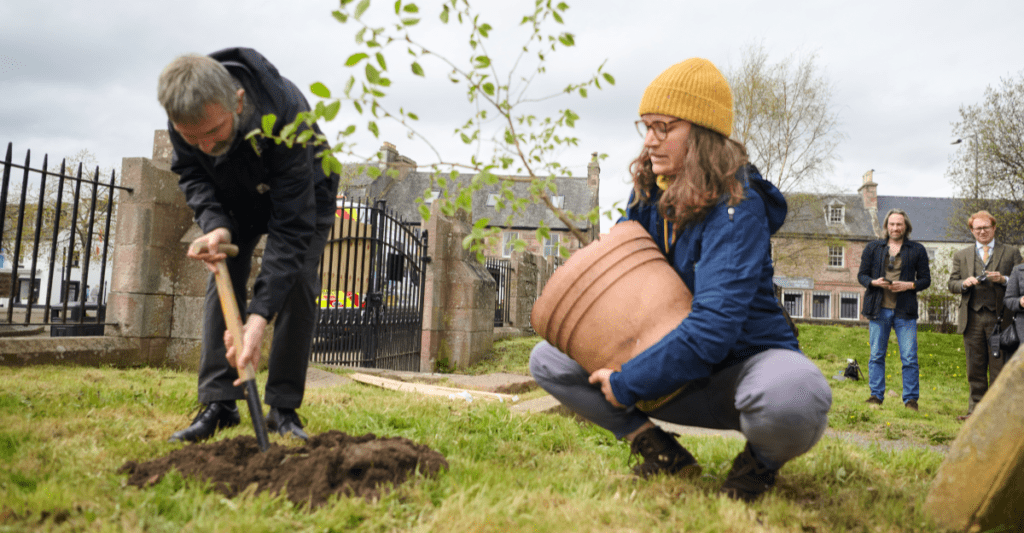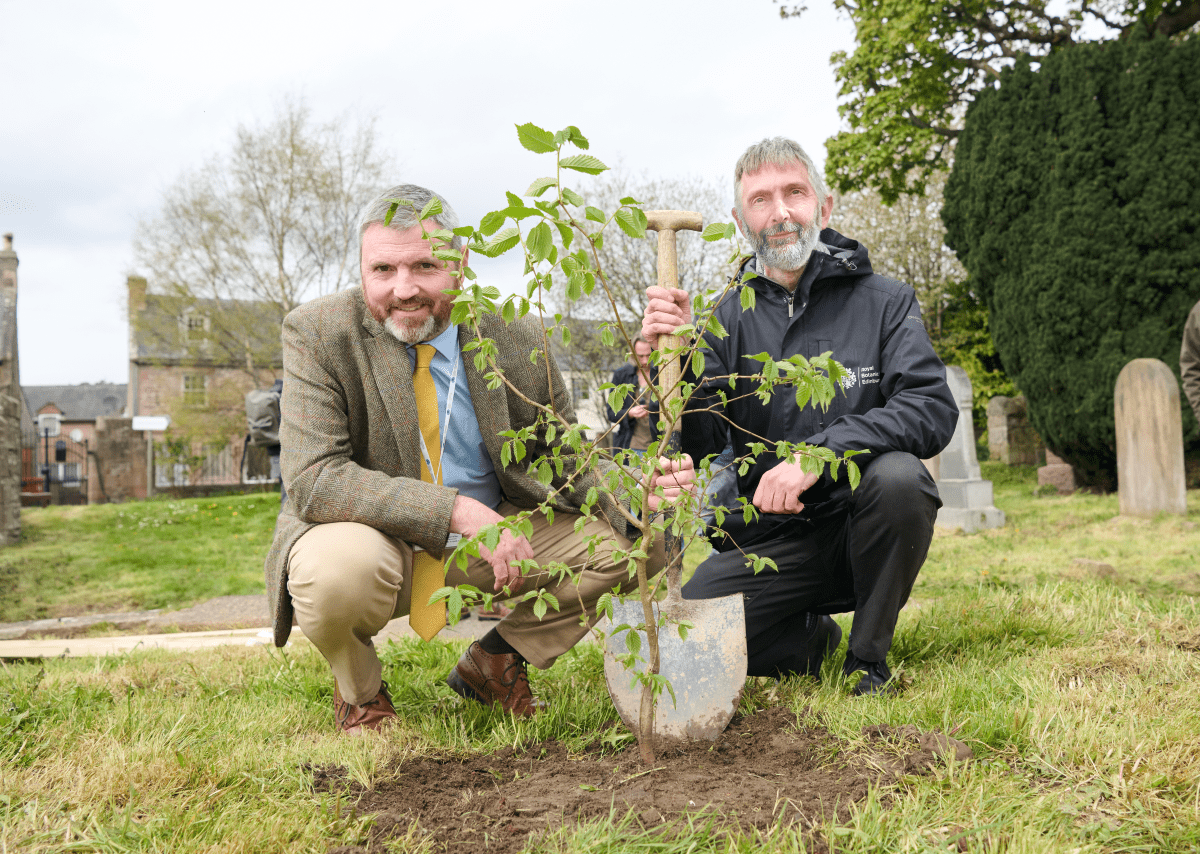
The Beauly Elm: New life at the site of ‘Europe’s oldest’ wych elm
For more than 800 years it stood in the Highland village of Beauly until last year when it succumbed to Dutch elm disease and fell over.
But now there is new life at the site of The Beauly Elm after a sapling from the tree, believed to be ‘Europe’s oldest’ wych elm, was replanted.
The sapling was recovered from the site of the Beauly Elm after the tree fell early last year and is thought to have come from the ancient tree. It has been in the care of Royal Botanic Garden Edinburgh (RBGE) as part of its Scottish Plant Recovery project.
Another sapling that has been bred to be disease resistant was also planted at the site.
‘The Beauly Elm was an iconic cultural asset and piece of heritage in its own right,’ said Sarah Franklin from Historic Environment Scotland.
‘Whilst a sad loss, its story has been able to live on thanks to our digital documentation and with the preservation of some pieces of the timber gifted to the local community and some kept within the HES collections.
‘With the planting of these elm saplings, we hope to continue the legacy of the Beauly Elm, creating a new piece of living archaeology for future generations to experience and enjoy.’

James MacPherson, Head of North Region for HES, and Dr Max Coleman, Science Communicator at RBGE, with one of the newly planted wych elm saplings.
At more 800 years old, the Beauly Elm was thought to be the oldest surviving elm tree in Europe.
It’s described in medieval documents as a boundary marker for the land granted to the Valliscaulian Monks on establishment of the Beauly Priory, standing in the north side of the village square for centuries.
‘The one-year-old Wych elm sapling that we are planting today is the offspring of mature elms in the Scottish Borders which somehow survived this devastating disease,’ said Max Coleman from RBGE.
‘Our scientists and horticulturists at the Royal Botanic Garden Edinburgh selectively bred seedlings from these super survivors and our hope is that the young tree will inherit these beneficial traits from its parents and, in time, replace the original Beauly elm.
‘This innovative work is part of RBGE’s three-year Scottish Plant Recovery project, funded by the Scottish Government’s Nature Restoration Fund, to restore ten threatened Scottish plant species including wych elms, crab apples, the fern oblong woodsia and the colourful alpine blue-sow-thistle.’
Read more Home and Garden news here.
Subscribe to read the latest issue of Scottish Field.
TAGS

